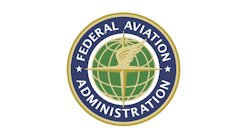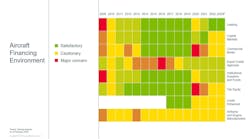WASHINGTON – The U.S. Department of Transportation’s Federal Aviation Administration (FAA) is proposing a $12 million civil penalty against Southwest Airlines for failing to comply with Federal Aviation Regulations in three separate enforcement cases related to repairs on Boeing 737 jetliners operated by the Dallas-based airline.
The FAA alleges that beginning in 2006, Southwest conducted so-called “extreme makeover” alterations to eliminate potential cracking of the aluminum skin on 44 jetliners. The FAA conducted an investigation that included both the airline and its contractor, Aviation Technical Services, Inc., (ATS) of Everett, Wash. Investigators determined that ATS failed to follow proper procedures for replacing the fuselage skins on these aircraft. FAA investigators also determined that ATS failed to follow required procedures for placing the airplanes on jacks and stabilizing them. All of the work was done under the supervision of Southwest Airlines, which was responsible for ensuring that procedures were properly followed.
Southwest returned the jetliners to service and operated them when they were not in compliance with Federal Aviation Regulations, the FAA alleges. The regulatory violations charged involve numerous flights that occurred in 2009 after the FAA put the airline on notice that these aircraft were not in compliance with either FAA Airworthiness Directives or alternate, FAA-approved methods of complying with the directives. The FAA later approved the repairs after the airline provided proper documentation that the repairs met safety standards
“Safety is our top priority, and that means holding airlines responsible for the repairs their contractors undertake,” said U.S. Transportation Secretary Anthony Foxx. “Everyone has a role to play and a responsibility to ensure the safety of our transportation system.”
During its investigation, the FAA found that ATS workers applied sealant beneath the new skin panels but did not install fasteners in all of the rivet holes during the timeframe for the sealant to be effective. This could have resulted in gaps between the skin and the surface to which it was being mounted. Such gaps could allow moisture to penetrate the skin and lead to corrosion. As a result of the improper repairs, these airplanes did not comply with Federal Aviation Regulations.
The FAA also alleges that ATS personnel failed to follow requirements to properly place these airplanes on jacks and shore them up while the work was being performed. If a plane is shored improperly during skin replacement, the airframe could shift and lead to subsequent problems with the new skin.
In the third case, the FAA alleges that Southwest Airlines failed to properly install a ground wire on water drain masts on two of its Boeing 737s in response to an FAA Airworthiness Directive addressing lightning strikes on these components. As a result, the aircraft were not in compliance with Federal Aviation Regulations. The airplanes were each operated on more than 20 passenger flights after Southwest Airlines became aware of the discrepancies but before the airline corrected the problem.
“The FAA views maintenance very seriously, and it will not hesitate to take action against companies that fail to follow regulations,” said FAA Administrator Michael Huerta.
Southwest Airlines has 30 days from the receipt of the FAA’s Civil Penalty letter to respond to the allegations.


